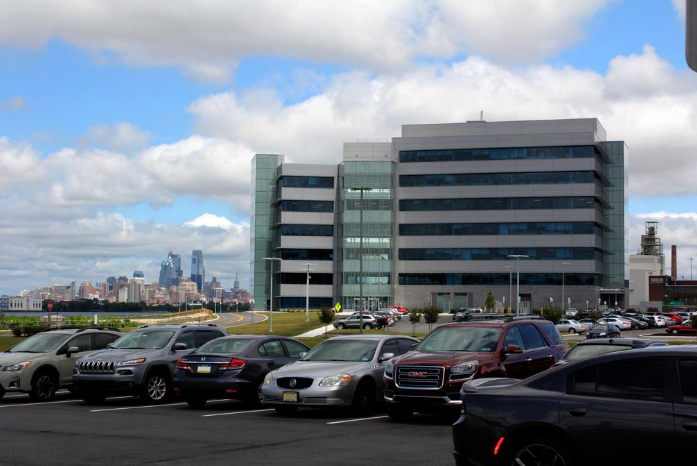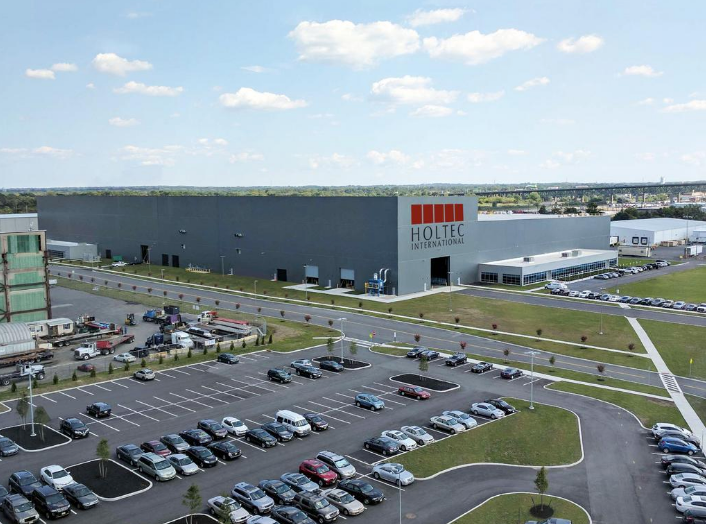Camden’s ‘Ben Franklin’ — Holtec CEO’s big plans for Camden & the global nuclear industry11/13/2017
Via Philadelphia Business Journal By Michelle Caffrey – Reporter, Philadelphia Business Journal Nov 9, 2017, 11:43am EST Updated Nov 9, 2017, 11:50am Kris Singh had forgotten. The CEO of Holtec International, whose new manufacturing plant has been heralded as a potential game changer for the Camden, used to know the streets of the city well back in the early ‘70s. At the time, Singh, armed with a Ph.D from the University of Pennsylvania and drive to master the alchemy of turning research into action, worked for the Joseph Oat Corp. and was tasked with helping find the small industrial fabrication company a new home base. Remembering that the site of the New York Shipbuilding Corp., once a dominate force building U.S. Navy destroyers along the Delaware River, had fallen into bankruptcy and shuttered four years prior in 1968, he made a suggestion. “I said, ‘The shipyard closed, maybe you should get a small shop there,’” Singh said. Forty-two years later, he chose Camden again, when economic development tax credits made possible the construction of a massive move than $300 million manufacturing facility and executive building. The Krishna P. Singh Technology Campus is now up and running on the riverfront, a hulking campus of more than 1.5 million square feet, yards from the still-operating Oat company. It’s been a long time, however, and Singh realized the city was now unfamiliar to him. “I’d forgotten all the roads and streets around here,” Singh said in a July interview. He’s learning the city all over again as he works toward a plan that he believes could transform both Camden and the nuclear energy industry — both of which could use some help. “It’s full circle for me,” he said. Meet Kris Singh Holtec’s nuclear arm has had a base of operations in Marlton, N.J., since Singh started the company in 1986, and grew to become a major player in the nuclear industry worldwide, but Singh himself has never been in the region’s public eye. While his $20 million gift to Penn to create a nanotechnology center in 2007 made headlines as the largest single gift in the history of the School of Engineering and Applied Science, he first gained local notoriety in 2012 when he joined South Jersey business leader and Democratic powerbroker George Norcross in purchasing part ownership of Interstate General Media, then-parent company of the Philadelphia Inquirer and Philadelphia Daily News. Norcross’ holding company bought out Singh’s shares a year later, and Norcross sold his entire stake in 2014. “Kris has been somebody who has been largely unknown in the region, and in my opinion largely still is,” Norcross said in an interview with the Philadelphia Business Journal. “He is not someone who seeks out attention. … That’s not what he does.” Making a home Despite his aversion to the spotlight, in 2014 Singh and his company became a fixture in regional news stories about Camden when he announced Holtec planned to build a massive manufacturing operation in the struggling city. The only way the decision could be financially viable, Singh said, was to take advantage of $260 million in tax credits through the New Jersey Economic Development Authority’s Grow NJ program, which allocates tax credits to companies that decide to locate and add new jobs in impoverished cities including Camden. Other companies like Subaru of America and American Water have also taken advantage of the credits, which are determined based on projected job growth and only awarded after milestones are met. All have faced skepticism, with opponents arguing the companies are mostly relocating jobs from the suburbs into Camden and the ones that could go to Camden residents weren’t significant enough to warrant such large tax breaks. Holtec took additional heat given Norcross’ political power in the state and his seat on Holtec’s board of directors, which is uncompensated. From Norcross’ perspective, critics of the incentives don’t realize how the process really works, that the incentives are not a grant and that it will take nearly 20 years for Holtec to receive all of the benefits, if it meets projected job levels. Singh also took on significant risk, he argues, by putting up the nearly $400 million in capital required. “He was the original pioneer of stepping up and decided to do probably the single largest project in Camden,” Norcross said. “It was Holtec that really launched the renaissance, in my opinion.” In an interview with the Business Journal in October, Singh said if all goes according to plan, Holtec will eventually receive about 35 cents to 45 cents on the dollar for this investment. “Without that, it would’ve been impossible to make those numbers work,” he said. His competitors are based in countries where labor is cheap, so to be competitive he has to foot the bill for millions of dollars worth of high-end equipment and grow a skilled labor base. While 200 engineers and 200 fabricators are working on site now, he expects to increase that number from hundreds to thousands and one day, he hopes, to employ as many as 5,000. He’s talked about possibly turning the surrounding Fairview neighborhood, once home to shipyard yard employees, into a company town once again by developing adjacent properties. “It’s a little bit premature,” he cautioned. “We have to first build up the workforce here, stabilize the workforce, get them trained and then look at the next steps. In my long-term plan, that’s in the cards. Of course it will depend on how successful we are in our business ventures. But that is the goal.” The power to change power Those business ventures are vested in an industry that faces undeniable challenges. A combination of widespread fear of nuclear reactors fueled by the Fukushima nuclear disaster in 2011 and the fracking boom that produced seemingly endless amounts of cheap natural gas was a one-two punch that labeled the nuclear industry as an expensive and dangerous energy source. Three nuclear power plants in Florida, Wisconsin and California shut down operations in 2013, the first year any nuclear reactor was retired since 1998, according to the U.S. Energy Information Administration (EIA). Plants in Vermont and Nebraska closed in 2014 and 2016, respectively. Six more are expected to be retired within the decade, including Pennsylvania’s Three Mile Island and New Jersey’s Oyster Creek plants. Attempts to build new reactors in the southeastern United States have faltered. The construction of two new reactors in South Carolina was abandoned amid cost overruns and a plant being built in Georgia has also been met with cost criticism. Nuclear energy still supplies about 20 percent of the country’s energy generation, but the EIA projects that number will drop to 11 percent by 2050 as nuclear plants are retired and natural gas and renewable energy sources grow in market share. “The industry trajectory is not very good,” Singh readily admits. “A lot of people have exited the industry because they think that it has no future, and they are right in the sense that the way it is going, it is in a very tough spot.” That, in essence, is Holtec’s big play — to change the way it is going. Enter the small modular reactor, or SMR. SMR technology scales nuclear power generation down from the traditional massive reactors to portable, self-contained units that can be factory assembled. SMRs have been heralded as much cheaper and far safer — a potentially game-changing combination for the nuclear energy industry, although the commercialization and approval process to make SMRs a reality is still in the works. Holtec isn’t the only player in the SMR game, but after it lost out on a U.S. Department of Energy funding award to develop SMR designs, it’s the only company in the world that’s developing a model without any government funding. Singh said its model, SMR-160, is designed to be everything people worry nuclear power isn’t — safe, secured from potential attacks, affordable and easy to get up and running and operate. “There is a market for nuclear, but it cannot be a market that will work if the reactors are expensive and do not guarantee, not just assure but guarantee, there will be no accidents that will affect local populations,” Singh said. “So if we can make that work, then, yes, we will create the industry all over again. And that’s what we’re doing.” Aside from self-contained entities like military bases, that market also isn’t domestic. Holtec’s focused on deploying the SMRs worldwide. The company already has a deep global presence, with its equipment in use in more than 20 countries across six continents. Along with local politicians including New Jersey Gov. Chris Christie, both Ukraine’s Ambassador Valeriy Chaly and India’s consul general in New York Sandeep Chakravorty spoke at Holtec’s September ribbon-cutting ceremony in Camden. Once SMRs are ready to go — Singh expects the licensing process to last the next three years, followed by manufacturing, with the earliest deployment expected in 2023 — he said they have the potential to bring reliable, clean energy to countries that traditionally haven’t had the infrastructure and talent pools to support power stations since SMRs require far less manpower and, unlike traditional nuclear plants, do not have to be located near a large body of water. He compares the capability of SMRs to the revolutionary impact cell phones had in developing nations. In many poorer countries, people living in remote areas went from no connectivity, as phone line infrastructure didn’t reach them, to having access to the world of information available on affordable cell phones. The nature of the SMRs also means energy could be supplied locally, cutting out waste from energy lost during transmission and preventing distant outages from affecting large numbers of people. “It’s like going back to the agrarian economy, you grow your wheat and you consume it,” Singh said. SMRs have had their critics, with some academics dismissing the hype over their potential to have an impact on the industry as overblown and inaccurate, too little too late in a global economy that’s already shifted toward renewables and is increasingly reliant on natural gas. Unsurprisingly, Singh doesn’t entertain those arguments. “It’s all this nonsense. This goes on all the time. If you pay attention to those things, you don’t really get any of the work done,” he said. If the SMR does not live up to its potential, however, Singh’s business still has a solid outlook. Beyond its nuclear arm, Holtec’s large-scale manufacturing operations fabricates heavy equipment for industries ranging from military to petrochemical and a host in-between. Its Camden-based nuclear division is particularly focused on building dry cask storage systems that are needed to contain spent nuclear fuel — useful when shutting down nuclear plants. Many of the products and processes Holtec creates stem from Singh’s own patents. He has 78. Camden’s ‘little Ben Franklin’
Singh’s bullish take on transformation, whether he’s talking about the city of Camden or the nuclear industry, makes sense when you speak to people who know him, like Vijay Kumar, the Nemirovsky Family Dean of Penn Engineering at the University of Pennsylvania. “He came from extraordinarily humble beginnings. I think he told me once that he lived in a house with no electricity and he had to walk several miles to school and studied at night by a fire or candle,” Kumar said. “And now, I believe, he has the solution for clean energy worldwide.” Singh earned a bachelor’s degree in mechanical engineering from Ranchi University in India in 1967 before coming to the United States and earning both a master’s and doctorate in mechanical engineering at Penn. Kumar first met Singh more than 25 years ago, when Kumar was a young faculty member who had just arrived on Penn’s campus and Singh was the chair of the advisory committee for the engineering department. “At the time, I never saw where all of this is going, but I could immediately see this question of impact. If he was asked a simple question, he’d say like ‘OK, great, you’re doing this, but where is it going to take you next?’ As a young academic at that time, there is no next, this is my life, this is my career.” Singh gave the academic life a try. Early in his career, he took a job at Cornell University. Six months later he realized he didn’t want to research and teach, knowing the impact of that work would take decades to come to fruition. He wanted to work and see the results of that work in action, now. “I always wanted to do applied research, not trying to prove that zero is actually zero but really create things can be used,” he said. After building up experience in practical engineering in the field, he started Holtec, short for Holistic Technologies, a purposefully vague name he said was along the lines of “solution provider” since Singh didn’t quite know what they’d be doing beyond immediate business plans to get into nuclear fuel storage. He just knew he wanted to steer his own ship. “You want to have your own company because it’s the vehicle. What you want to do, you need to find a way to do it, and having your own company allows you to build it yourself,” he said. “You can put your money on the line, like we have done for the SMR.” Singh would not have made a good academic in that sense, Kumar said, as most academics tend to be risk-averse. “He understands you have to think outside of the box and be entrepreneurial,” he said. “He’s one of our most successful, I would say the most successful alumni, in terms of what he has done for the school and the Philadelphia area, in Camden.” Singh’s $20 million gift to establish the Krishna P. Singh Nanotechnology Center is fueling research that Kumar said could have significant impacts in numerous fields from creating nanoscale robotic devices that can perform procedures inside the human body to developing novel materials for roof shingles that project solar radiation by day and emit heat inside buildings at night. “He has a warm personality and is a man of the highest integrity, but above all, I think he cares about the society, the world,” Kumar said. “You see all the wonderful things he’s done. He’s a deeply compassionate man, so that is something that strikes you ... but behind that ease and warmth is just a man with a lot of discipline and a lot of strategic thinking that he brings to bear.” Kumar’s description is not unlike a figure Singh summoned himself when asked how he views his role in Greater Philadelphia. “I kind of look at myself as a little Ben Franklin who came from somewhere,” he said, pausing to let out an upbeat laugh, “and then decided to do something significant.” Read the original article here. Comments are closed.
|
Categories
All
Archives
July 2023
|






 RSS Feed
RSS Feed